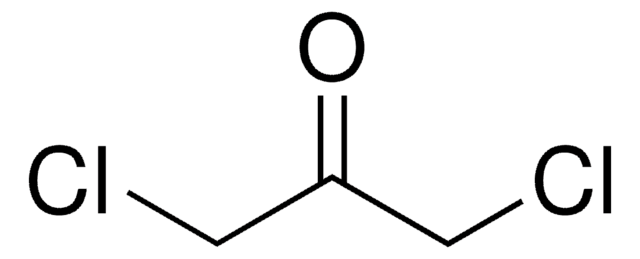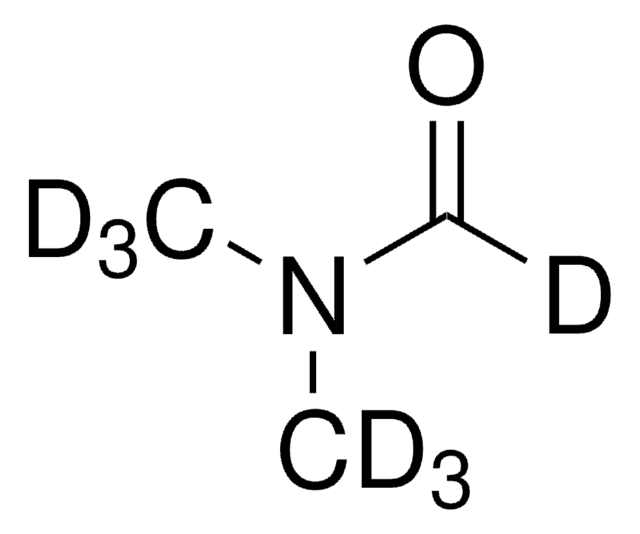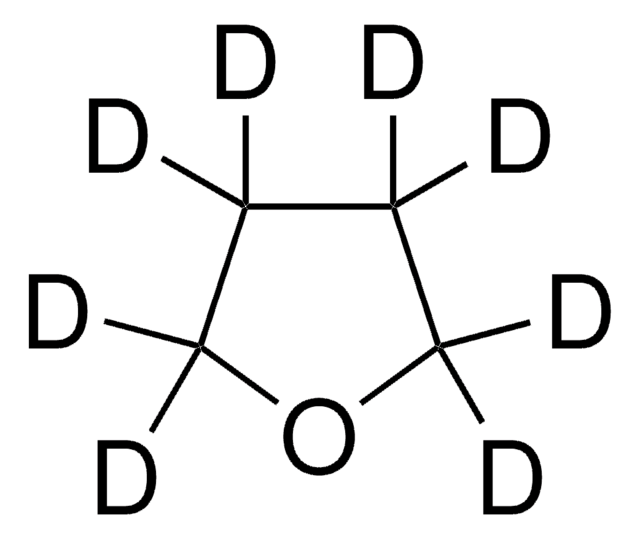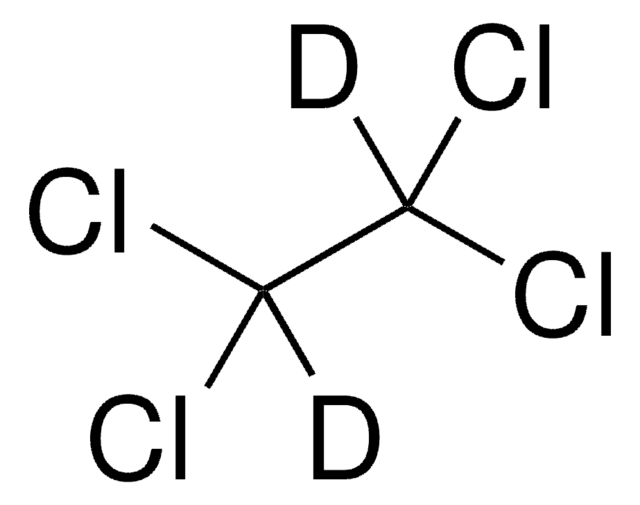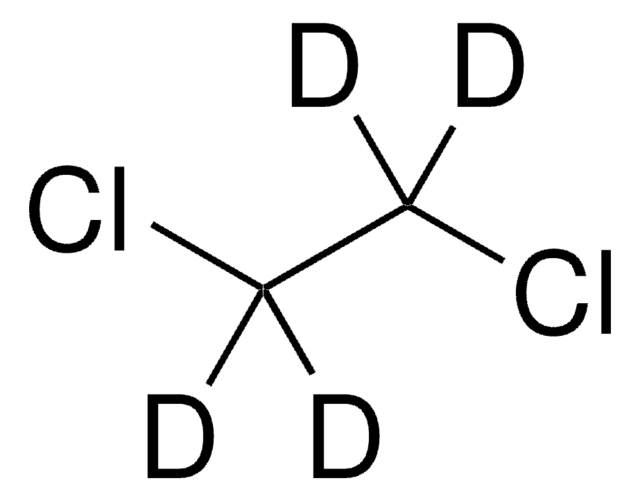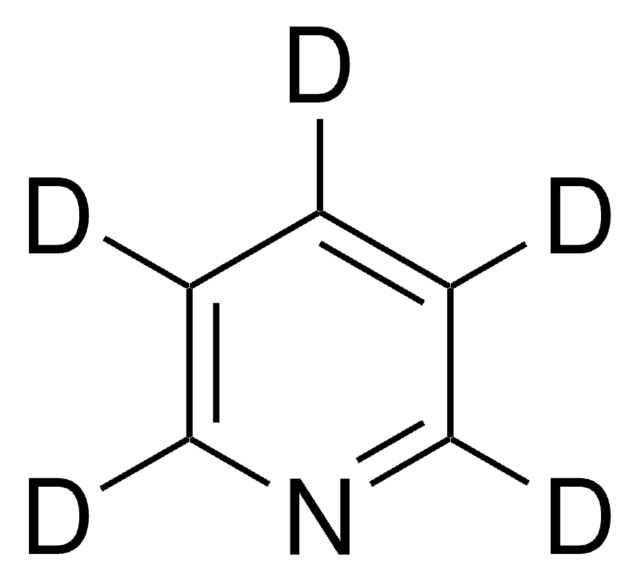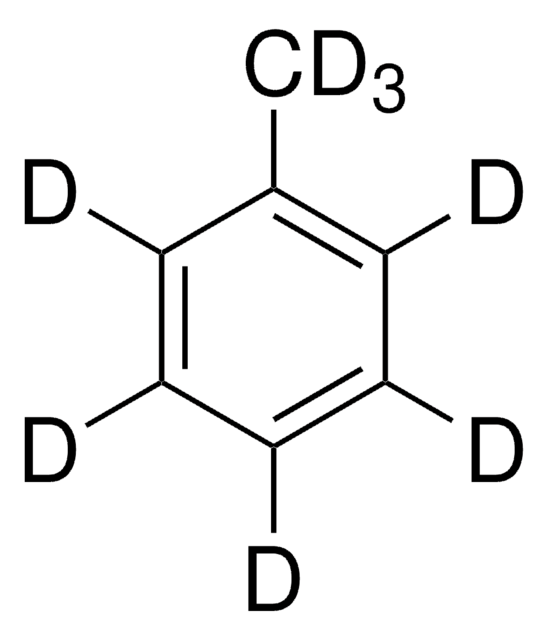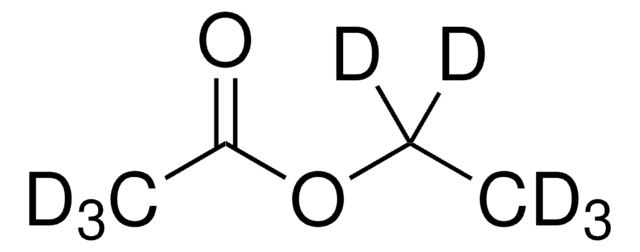186406
1,4-Dioxane-d8
≥99 atom % D
Sinónimos:
p-Dioxane-d8, Octadeuterodioxane
About This Item
Productos recomendados
isotopic purity
≥99 atom % D
assay
≥99% (CP)
form
liquid
technique(s)
NMR: suitable
refractive index
n20/D 1.4198 (lit.)
bp
99 °C (lit.)
mp
12 °C (lit.)
density
1.129 g/mL at 25 °C (lit.)
mass shift
M+8
SMILES string
[2H]C1([2H])OC([2H])([2H])C([2H])([2H])OC1([2H])[2H]
InChI
1S/C4H8O2/c1-2-6-4-3-5-1/h1-4H2/i1D2,2D2,3D2,4D2
InChI key
RYHBNJHYFVUHQT-SVYQBANQSA-N
¿Está buscando productos similares? Visita Guía de comparación de productos
General description
Application
- Neutron Scattering of Residual Hydrogen in 1,4-Dioxane-d8 Liquid: Understanding Measurements with Molecular Dynamics Simulations: This study utilizes 1,4-Dioxane-d8 to enhance neutron scattering measurements, providing crucial data for researchers in material science and analytical chemistry on solvent behavior and molecular interactions (de Almeida et al., 2016).
- Biodegradation of 1,4-dioxane and transformation of related cyclic compounds by a newly isolated Mycobacterium sp. PH-06: This research highlights the degradation pathways of 1,4-Dioxane-d8, contributing to environmental sciences by offering insights into bioremediation techniques that mitigate solvent impact (Kim et al., 2009).
- Degradation of 1,4-dioxane and cyclic ethers by an isolated fungus: Explores the fungal degradation of cyclic ethers, including 1,4-Dioxane-d8, underscoring its significance in environmental cleanup and testing standards for academic and pharmaceutical research on organic pollutant breakdown (Nakamiya et al., 2005).
Recommended products
signalword
Danger
hcodes
Hazard Classifications
Carc. 1B - Eye Irrit. 2 - Flam. Liq. 2 - STOT SE 3
target_organs
Respiratory system
supp_hazards
Storage Class
3 - Flammable liquids
wgk_germany
WGK 3
flash_point_f
41.0 °F - closed cup
flash_point_c
5 °C - closed cup
ppe
Eyeshields, Faceshields, Gloves, type ABEK (EN14387) respirator filter
Elija entre una de las versiones más recientes:
¿Ya tiene este producto?
Encuentre la documentación para los productos que ha comprado recientemente en la Biblioteca de documentos.
Los clientes también vieron
Artículos
Use this reference table to find the coupling values and chemical shifts of our NMR (deuterated) solvents. Melting and boiling points, molecular weight, density, and CAS number are also listed.
Nuestro equipo de científicos tiene experiencia en todas las áreas de investigación: Ciencias de la vida, Ciencia de los materiales, Síntesis química, Cromatografía, Analítica y muchas otras.
Póngase en contacto con el Servicio técnico
